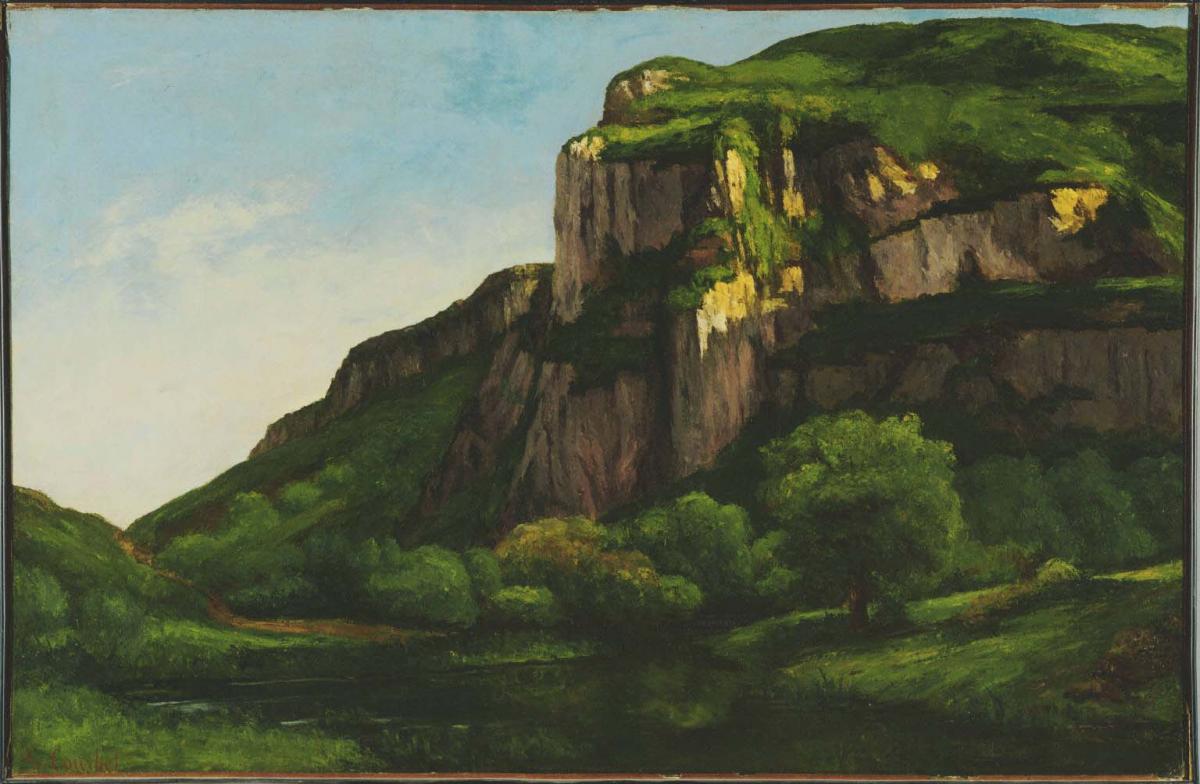Rocks at Mouthier
Gustave Courbet ( c. 1855 )

One of the most important painters in the development of modernism, Gustave Courbet linked his anti-idealist approach to art with his anticlerical and political beliefs. Critics considered his unconventional early works—monumental paintings of peasants and laborers—ugly and offensive. After 1855, when Courbet organized his own exhibition, the “Pavilion of Realism,” following rejection at the “Paris Universal Exposition” of the same year, he concentrated on landscapes and hunting scenes for which he won official recognition. Ever political, Courbet publicly turned down the cross of the Legion d’honneur in 1870. His involvement in the Paris Commune the following year cost him six months in jail.
The artist’s independent approach to the world did not accommodate the traditional academic hierarchy of subjects. Landscape, particularly the Franche-Comte in eastern France where he grew up, held a primal, almost sacred importance for him. Rocks at Mouthier depicts a place in the vicinity of Ornans, Courbet’s birthplace. The setting has been identified as the rocks of Hautepierre, a massive outcropping overhanging Mouthier-Haute-Pierre, shown in many of Courbet’s works. Its significance to Courbet is suggested by the fact that it is the subject of the painting on the easel in his most famous painting and manifesto of 1854–1855, “The Painter’s Studio” (Musee d’Orsay,Paris).
Courbet combines precise scientific observation with bravura. Slashing away with his palette knife, Courbet seems almost to have quarried the rock out of paint. Duncan Phillips bought Rocks at Mouthier early in his career as a collector. He recognized the vigor and independence of Courbet’s elemental and nonliterary vision, and regarded him as a kind of Walt Whitman of painting.